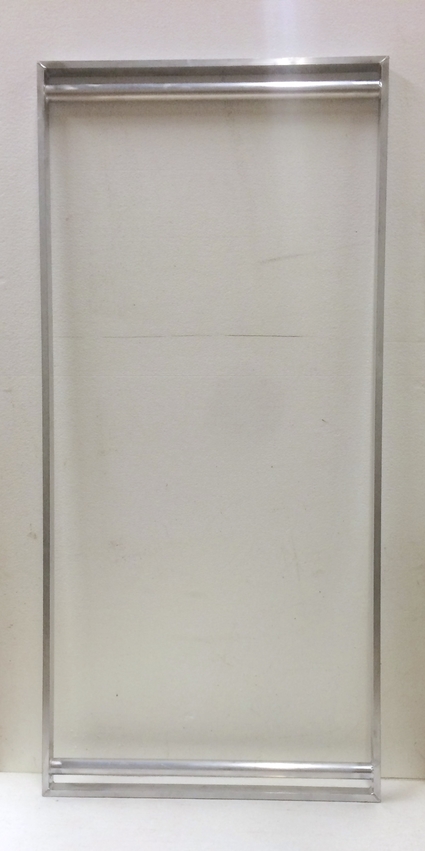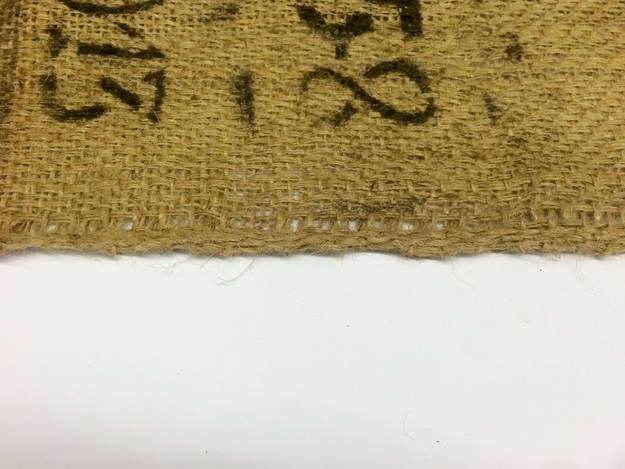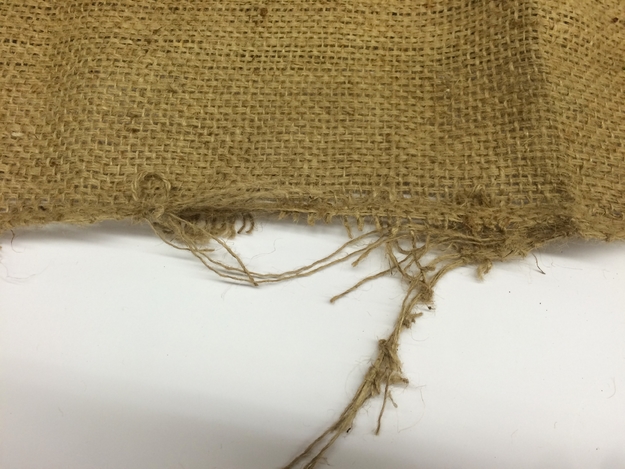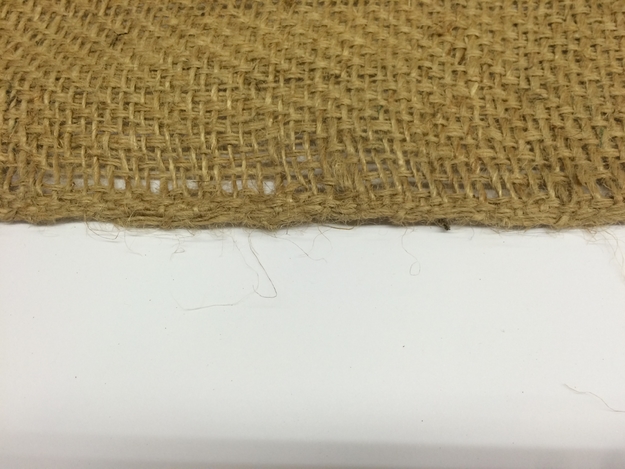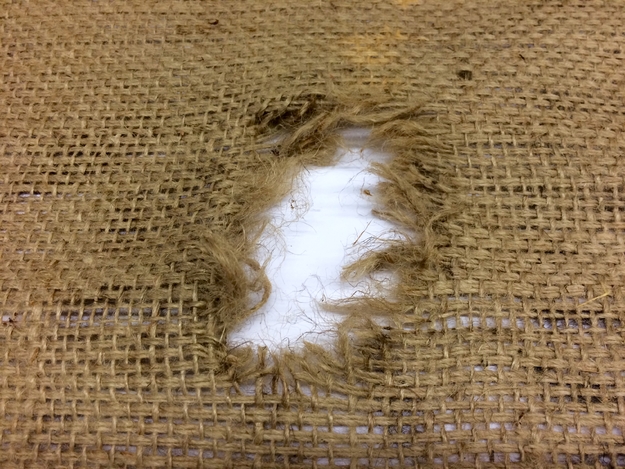Thanks to Chocolate Makers here in Amsterdam, we have a great supply of them. But as we begin up-scaling our project to our full (700x1400mm) panels, we have had to take a closer look at the differences in the sacks and how we can deal with these to come up with a standardised process.
Process and Measurement
The sacks themselves are around 620x1050mm long when folded. We discovered that by unpicking the edges, we can extend the width to around 700mm, which is perfect for our desired final panel size. The length then doubles to 2100mm, which is more than enough length for us.
There are, however, three different kinds of jute bags that we have come across, and this has become something we need to consider when stretching the jute in to the frame.
Jute #1
The first bags, which we have been experimenting with the most, are a thick weave. This allows for less of a chance of holes and unravelling, which would effect the jute stretching evenly. They also have a woven hem on the long sides that prevents unravelling. This is perfect, as I mentioned earlier we need to unpick them to get the correct width. The width, however, can vary in size. I have measured anywhere between 675mm and 700mm.
The shorter sides are folded and sewn, but seeing as we need to cut the length to 1400mm we will have to allow for adding a hem on one side. The jute unravels very easily, and one can end up losing 50mm or more off your length in no time if you are without hem.
Jute #1 hem, top side - This hem is doubled over, making it harder to sew through, but extra strong.
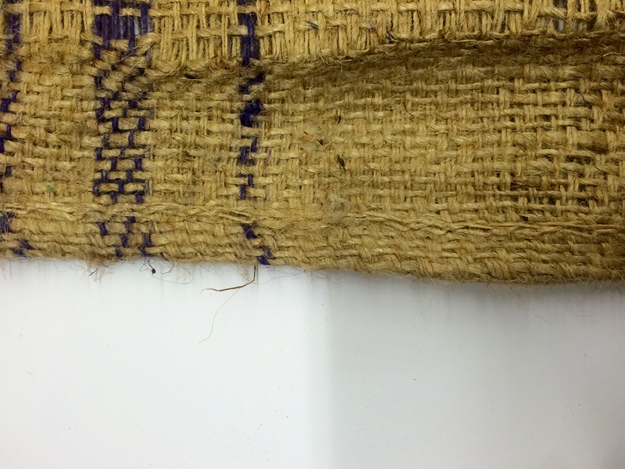
Jute #2
The other type of bags we have received use a thinner thread of jute. They also need to be unpicked, but they are sewn together with a whipstitch, which is more difficult to unpick than the previous bags. The quality of the woven hem also isn’t as good as the other sacks, so this tends to become unravelled or ripped easily. We would rather spend our time brewing and growing than unpicking! So these sacks might not be the best for a fast process.
They do, however, have a much neater top hem that is woven as opposed to folded and sewn, which makes it easier to sew through.
Holes
The final thing we need to be wary of is holes in the bags. These can affect the stretching greatly, and also cause unravelling in the bag which is not what we want.
